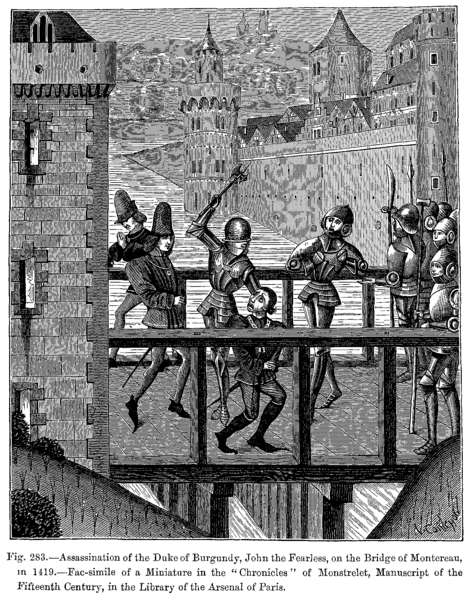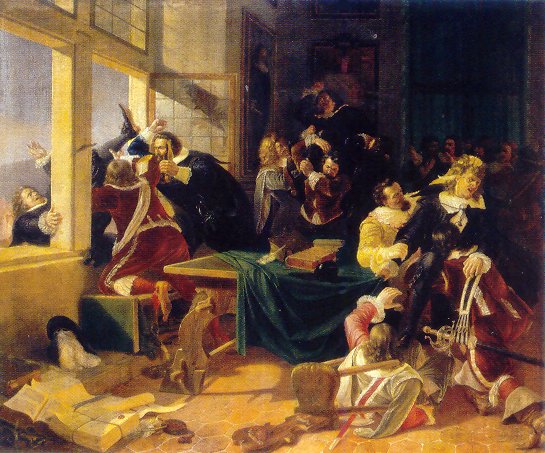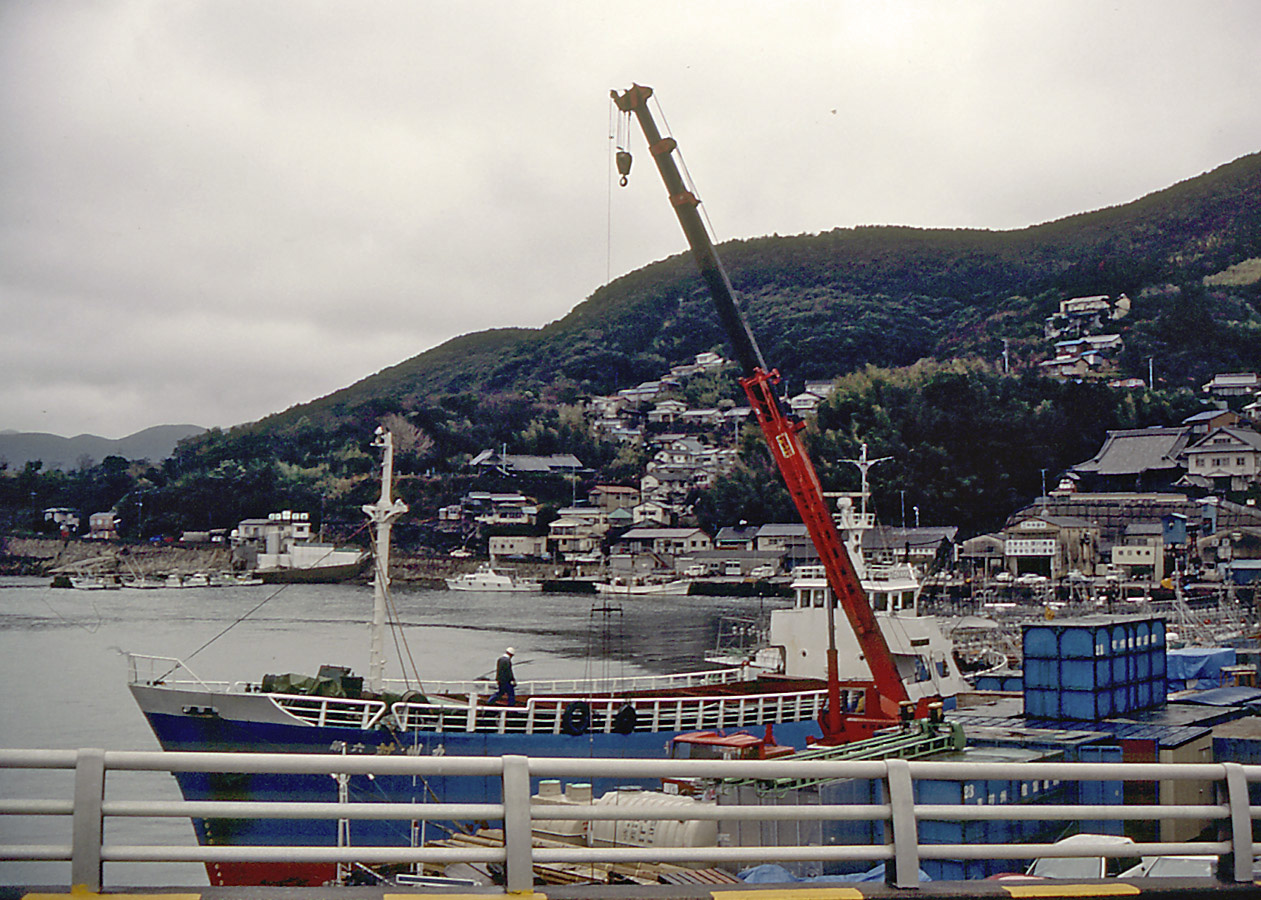|
1419
Year 1419 ( MCDXIX) was a common year starting on Sunday (link will display the full calendar) of the Julian calendar. Events January–December * January 19 – Hundred Years' War: Rouen surrenders to Henry V of England, which brings Normandy under the control of England. * June 20 – The Ōei Invasion of Tsushima Island, Japan by Joseon Korea begins. * July 30 – The first Defenestration of Prague occurs in Bohemia. * August – Siege of Ceuta: The Portuguese successfully defend off the invading Moroccans who attempt to retake the city of Ceuta. * September 10 – John the Fearless, Duke of Burgundy is assassinated by adherents of the Dauphin. * November – The Ottoman–Venetian peace treaty ends four years of conflict, by recognizing Venetian possessions in the Aegean and the Balkans. Date unknown * Portuguese sea captains João Gonçalves Zarco and Tristão Vaz Teixeira, at the service of Prince Henry the Navigator, discover the ... [...More Info...] [...Related Items...] OR: [Wikipedia] [Google] [Baidu] |
Ōei Invasion
The , known as the Gihae Expedition ( (己亥東征)) or Conquest of Tsushima (대마도 정벌(對馬島征伐)) in Korean, was a 1419 invasion from Joseon against wokou (Japanese pirate) bases on Tsushima Island, which is located in the middle of the Tsushima Strait between the Korean Peninsula and Kyushu.Nussbaum, Louis-Frédéric. (2005). "''Ōei no Gaikō''" i ''Japan encyclopedia,'' p. 735 n.b., Louis-Frédéric is pseudonym of Louis-Frédéric Nussbaum, ''see'Deutsche Nationalbibliothek Authority File The Japanese identifying phrase derives from the Ōei era (1394–1428), which is the Japanese era name of the calendar system in use in Japan. The corollary Korean identifying title derives from ''Gihae'' in the Chinese sexagenary cycle of the calendar system then in use in Joseon. In both, the terms are explicit equivalents for the Gregorian calendar year of 1419. Background From about 1400, despite its incorporation into the Japanese political order (this incorporati ... [...More Info...] [...Related Items...] OR: [Wikipedia] [Google] [Baidu] |
John The Fearless
John I (french: Jean sans Peur; nl, Jan zonder Vrees; 28 May 137110 September 1419) was a scion of the French royal family who ruled the Burgundian State from 1404 until his death in 1419. He played a key role in French national affairs during the early 15th century, particularly in the struggles to rule the country for the mentally ill King Charles VI, his cousin, and the Hundred Years' War with England. A rash, ruthless and unscrupulous politician, John murdered the King's brother, the Duke of Orléans, in an attempt to gain control of the government, which led to the eruption of the Armagnac–Burgundian Civil War in France and in turn culminated in his own assassination in 1419. The involvement of Charles, the heir to the French throne, in his assassination prompted John's son and successor Philip to seek an alliance with the English, thereby bringing the Hundred Years' War to its final phase. John played an important role in the development of gunpowder artillery in E ... [...More Info...] [...Related Items...] OR: [Wikipedia] [Google] [Baidu] |
Siege Of Ceuta (1419)
The siege of Ceuta of 1419 (sometimes reported as 1418) was fought between the besieging forces of the Marinid Sultanate of Morocco, led by Sultan Abu Said Uthman III, including allied forces from the Emirate of Granada, and the Portuguese garrison of Ceuta, led by Pedro de Menezes, 1st Count of Vila Real. After the loss of the city in a surprise attack in 1415 known as the Conquest of Ceuta, the Sultan gathered an army four years later and besieged the city. The Portuguese gathered a fleet under the command of Princes Henry the Navigator and John of Reguengos to relieve Ceuta. According to the chroniclers, the relief fleet turned out to be quite unnecessary. In a bold gambit, D. Pedro de Menezes led the Portuguese garrison in a sally against the Marinid siege camp and forced the lifting of the siege before the relief fleet even arrived. Blamed for losing Ceuta, the Marinid sultan was assassinated in a coup in Fez in 1420, leaving only a child as his heir. Morocco descended into ... [...More Info...] [...Related Items...] OR: [Wikipedia] [Google] [Baidu] |
Hundred Years' War
The Hundred Years' War (; 1337–1453) was a series of armed conflicts between the kingdoms of Kingdom of England, England and Kingdom of France, France during the Late Middle Ages. It originated from disputed claims to the French Crown, French throne between the English House of Plantagenet and the French royal House of Valois. Over time, the war grew into a broader power struggle involving factions from across Western Europe, fuelled by emerging nationalism on both sides. The Hundred Years' War was one of the most significant conflicts of the Middle Ages. For 116 years, interrupted by several Ceasefire, truces, five generations of kings from two rival Dynasty, dynasties fought for the throne of the dominant kingdom in Western Europe. The war's effect on European history was lasting. Both sides produced innovations in military technology and tactics, including professional standing armies and artillery, that permanently changed warfare in Europe; chivalry, which had reac ... [...More Info...] [...Related Items...] OR: [Wikipedia] [Google] [Baidu] |
Ottoman–Venetian Peace Treaty (1419)
The Ottoman–Venetian peace treaty of 1419 was signed between the Ottoman Empire and Republic of Venice, ending a short conflict between the two powers, confirming Venetian possessions in the Aegean Sea and the Balkans, and stipulating the rules of maritime trade between them. Background Following the victory of the Ottoman prince Mehmed I in the civil war of the Ottoman Interregnum in 1413, the Republic of Venice, as the premier maritime and commercial power in the area, endeavoured to renew the treaties it had concluded with Mehmed's predecessors. Its ''bailo'' in the Byzantine capital, Constantinople, Francesco Foscarini, was instructed to proceed to the Sultan's court to that effect. Foscarini failed, however, as Mehmed campaigned in Anatolia, and Venetian envoys were traditionally instructed not to move too far from the shore (and the Republic's reach); Foscarini had yet to meet the Sultan by July 1415, when Mehmed's displeasure at this delay was conveyed to the Venetian ... [...More Info...] [...Related Items...] OR: [Wikipedia] [Google] [Baidu] |
Defenestrations Of Prague
The Defenestrations of Prague ( cs, Pražská defenestrace, german: Prager Fenstersturz, la, Defenestratio Pragensis) were three incidents in the history of Bohemia in which people were defenestrated (thrown out of a window). Though already existing in Middle French, the word ''defenestrate'' ("out of the window") is believed to have first been used in English in reference to the episodes in Prague in 1618 when the disgruntled Protestant estates threw two royal governors out of a window of the Hradčany Castle and wrote an extensive apologia explaining their action. In the Middle Ages and early modern times, defenestration was not uncommon—the act carried elements of lynching and mob violence in the form of murder committed together. The first governmental defenestration occurred in 1419, second in 1483 and the third in 1618, although the term "Defenestration of Prague" more commonly refers to the third. Often, however, the 1483 event is not recognized as a "significant de ... [...More Info...] [...Related Items...] OR: [Wikipedia] [Google] [Baidu] |
Tsushima Island
is an island of the Japanese archipelago situated in-between the Tsushima Strait and Korea Strait, approximately halfway between Kyushu and the Korean Peninsula. The main island of Tsushima, once a single island, was divided into two in 1671 by the Ōfunakoshiseto canal and into three in 1900 by the Manzekiseto canal. These canals were driven through isthmuses in the center of the island, forming "North Tsushima Island" (Kamino-shima) and "South Tsushima Island" ( Shimono-shima). Tsushima also incorporates over 100 smaller islands, many tiny. The name ''Tsushima'' generally refers to all the islands of the Tsushima archipelago collectively. Administratively, Tsushima Island is in Nagasaki Prefecture. The island group measures about by and had a population of about 34,000 . The main islands (that is, the "North" and "South" islands, and the thin island that connects them) are the largest coherent satellite island group of Nagasaki Prefecture and the eighth-largest in Japan. T ... [...More Info...] [...Related Items...] OR: [Wikipedia] [Google] [Baidu] |
Prague
Prague ( ; cs, Praha ; german: Prag, ; la, Praga) is the capital and largest city in the Czech Republic, and the historical capital of Bohemia. On the Vltava river, Prague is home to about 1.3 million people. The city has a temperate oceanic climate, with relatively warm summers and chilly winters. Prague is a political, cultural, and economic hub of central Europe, with a rich history and Romanesque, Gothic, Renaissance and Baroque architectures. It was the capital of the Kingdom of Bohemia and residence of several Holy Roman Emperors, most notably Charles IV (r. 1346–1378). It was an important city to the Habsburg monarchy and Austro-Hungarian Empire. The city played major roles in the Bohemian and the Protestant Reformations, the Thirty Years' War and in 20th-century history as the capital of Czechoslovakia between the World Wars and the post-war Communist era. Prague is home to a number of well-known cultural attractions, many of which survived the ... [...More Info...] [...Related Items...] OR: [Wikipedia] [Google] [Baidu] |
Kingdom Of Bohemia
The Kingdom of Bohemia ( cs, České království),; la, link=no, Regnum Bohemiae sometimes in English literature referred to as the Czech Kingdom, was a medieval and early modern monarchy in Central Europe, the predecessor of the modern Czech Republic. It was an Imperial State in the Holy Roman Empire, and the Bohemian king was a prince-elector of the empire. The kings of Bohemia, besides the region of Bohemia proper itself, also ruled other lands belonging to the Bohemian Crown, which at various times included Moravia, Silesia, Lusatia, and parts of Saxony, Brandenburg, and Bavaria. The kingdom was established by the Přemyslid dynasty in the 12th century from the Duchy of Bohemia, later ruled by the House of Luxembourg, the Jagiellonian dynasty, and from 1526 the House of Habsburg and its successor, the House of Habsburg-Lorraine. Numerous kings of Bohemia were also elected Holy Roman Emperors, and the capital, Prague, was the imperial seat in the late 14th century, and a ... [...More Info...] [...Related Items...] OR: [Wikipedia] [Google] [Baidu] |
Duke Of Burgundy
Duke of Burgundy (french: duc de Bourgogne) was a title used by the rulers of the Duchy of Burgundy, from its establishment in 843 to its annexation by France in 1477, and later by Holy Roman Emperors and Kings of Spain from the House of Habsburg who claimed Burgundy proper and ruled the Burgundian inheritance in the Low Countries. The Duchy of Burgundy was a small portion of the traditional lands of the Burgundians west of the river Saône which, in 843, was allotted to Charles the Bald's West Franks, kingdom of West Franks. Under the Ancien Régime, the Duke of Burgundy was the premier lay Peerage of France, peer of the kingdom of France. Beginning with Robert II of France, the title was held by the House of Capet, Capetians, the French royal family. It was granted to Robert's younger son, Robert I, Duke of Burgundy, Robert, who founded the House of Burgundy. When the senior line of the House of Burgundy became extinct, it was inherited by John II of France through proximity of ... [...More Info...] [...Related Items...] OR: [Wikipedia] [Google] [Baidu] |
Henry V Of England
Henry V (16 September 1386 – 31 August 1422), also called Henry of Monmouth, was King of England and Lord of Ireland from 1413 until his death in 1422. Despite his relatively short reign, Henry's outstanding military successes in the Hundred Years' War against France made England one of the strongest military powers in Europe. Immortalised in Shakespeare's "Henriad" plays, Henry is known and celebrated as one of the greatest warrior-kings of medieval England. During the reign of his father Henry IV, Henry gained military experience fighting the Welsh during the revolt of Owain Glyndŵr and against the powerful aristocratic Percy family of Northumberland at the Battle of Shrewsbury. Henry acquired an increased role in England's government due to the king's declining health, but disagreements between father and son led to political conflict between the two. After his father's death in 1413, Henry assumed control of the country and asserted the pending English claim t ... [...More Info...] [...Related Items...] OR: [Wikipedia] [Google] [Baidu] |
João Gonçalves Zarco
João Gonçalves Zarco ( 1390 – 21 November 1471) was a Portuguese explorer who established settlements and recognition of the Madeira Islands, and was appointed first captain of Funchal by Henry the Navigator. Life Zarco was born in Portugal, and became a knight at the service of Prince Henry the Navigator's household. In his service at an early age, Zarco commanded the caravels guarding the coast of the Algarve from Muslim incursions, was at the conquest of Ceuta, and later led the caravels that recognized the island of Porto Santo in 1418 to 1419 and afterward, the island of Madeira 1419 to 1420. He founded the city of Câmara de Lobos. He was granted, as hereditary leader (Capitania), half the island of Madeira (the Capitania of Funchal, being its first Captain-major). Together with his fellow fleet commanders, Tristão Vaz Teixeira and Bartolomeu Perestrelo, he initiated the colonization of the islands in 1425. As a knight of the House of Avis, he participated in the si ... [...More Info...] [...Related Items...] OR: [Wikipedia] [Google] [Baidu] |




_Tafel_03.png)
.jpg)